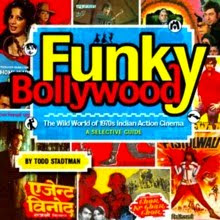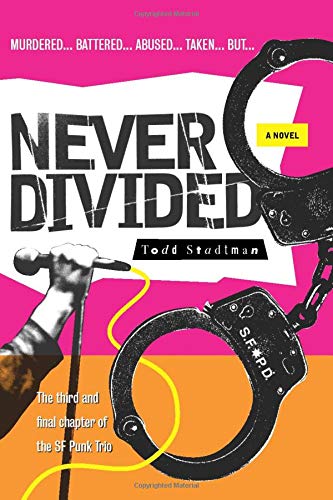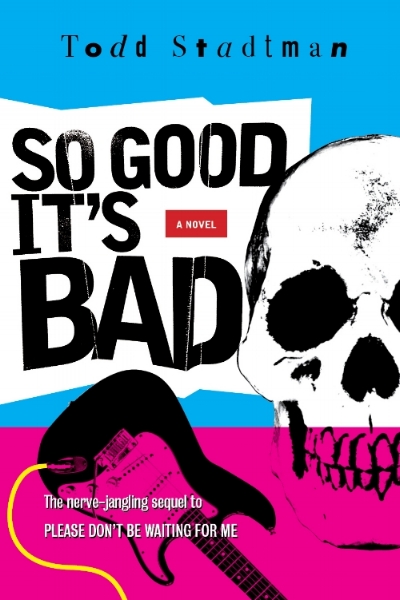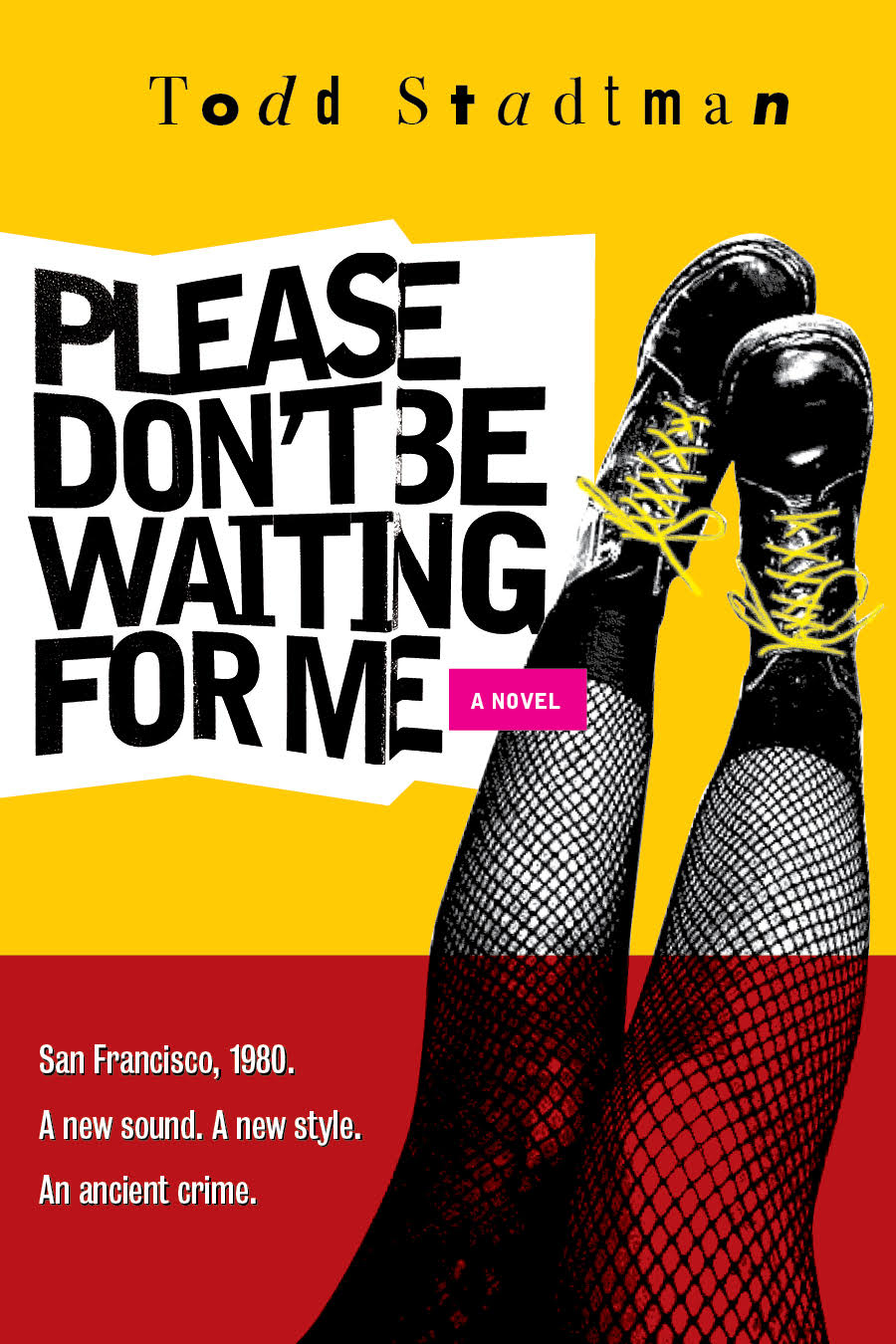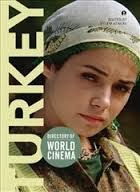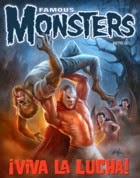The good news is that a pal of mine returned from his trip to Thailand with an armload of VCDs for me. The bad news is that, thanks to the fact that all of the writing on these VCDs is in Thai –- and that the discs themselves are not subtitled -- I have only been able to identify a very few of them. As for the remainder, I’ve decided to go ahead and review them as best I can, under made-up titles that I nonetheless feel reflect 100% journalistic accuracy as far as the actual contents of the films. If anyone, upon reading these descriptions, feels that they can provide any more information on the titles in question, please get in touch.
Punched by a Girl (Thailand, 198?)
This one was a bait-and-switch of the lowest order. The illustration on both the sleeve and the disc itself depicts two women in colorful masks and black cat-suits brandishing pistols, which lead me to believe that it would be a cheesy but potentially fun costumed hero caper. In reality what it is is an utterly generic action film starring Jarunee Suksawat, who made a good many such films back in the day. And because it’s a Thai film made in the 80s, whatever god Sorapong Chatree offended decrees that he also must be in it, and that he must do so swathed from head to toe in acid washed denim.
As far as the plot, I can’t tell you much other than that it begins with Jarunee and her (I think) sister’s (I think) mom being killed by a bunch of thugs, which leads to the (I think) sisters seeking vengeance upon the thugs with the help of the (I think) policeman played by Chatree. To the film’s credit, it jumps right into the action from the get go. Unfortunately, that action consists entirely of tepidly staged fights, shootouts and foot chases set in nondescript clearings. By the end of the film we’ve never seen the masks depicted on the sleeve -- nor have we seen the also depicted giant diamond, or the pick-up truck leaping through a massive explosion while itself also exploding. It’s almost like the makers of this VCD wanted my friend to buy it despite its subpar contents. I suspect some kind of profit motive was involved.
Love Me, Love My Guitar (Thailand, 199?)
A boy and a girl are in love. They talk on the phone, walk through parks very slowly, and rendezvous at gazebos. A guitar is present for much of this, though it is never played. Meanwhile, a goofy kid with an awesome MC Hammer wardrobe returns home to his parents after an apparent long absence. His mom is played by an obvious tranny. (Oh Thailand!) All of this is accompanied by instrumental versions of a scrotum-shriveling assortment of 70s and 80s light rock hits: “Nights in White Satin”, “A Woman in Love”, “All By Myself”, “I Know I’ll Never Love This Way Again”, Supertramp’s “The Logical Song” and -- oh, what the hell, why not throw in “The Theme from Shaft” while we’re at it.
(Sigh.) High-waisted jeans are worn. A bottle of Black Label is consumed. Sad things, happy things, and even putatively hilarious things happen; life’s rich pageant. Example: a girl is crippled in a car accident -- and the boy is responsible! She becomes bitter and spends the rest of the movie crying. That is (spoiler!), until she suddenly finds herself able to walk again for some reason. I think it has something to do with the power of love.
Despite the fact that the lack of subtitles made it utterly impossible for me to understand what was going on, there is nothing you could say to convince me that this is not a horrible movie. I don’t blame my friend, though, because the VCD sleeve has a picture of a guy rocking out on a guitar while a stock car flies over his head. Fuck you, Thailand.
King Mustache (Thailand, 197?)
The sleeve for this disc sports an illustration of a guy with a truly magnificent mustache. However, once we pop the disc into our player what we see is Sorapong Chatree crawling through a field, trying not to awaken a pair of sleeping gunmen and ultimately doing a face plant in a big pile of animal dung. Dammit, this is that fucking Sompote Sands movie about the water buffalo. There is no way I’m watching that again.
Violence Man (Thailand, 197?)
In this one Sorapong Chatree comes home to the humble shack inhabited by his parents only to find that they have been murdered by a gang of vicious thugs who were apparently seeking information about some kind of hidden treasure or something. And, OMG, you’ll never guess what happens: Sorapong and his fringed jacket set out to bring the thugs to justice with the power of violence. Ears are lopped off, faces enthusiastically spin-kicked, eyes gouged and… well, let’s just say that, this being a Thai action film, no hut is safe from the ravages of fire and various combustibles.
Sorapong finds an ally in his violencing in the form of fellow Thai superstar Sombat Methanee, who has had problems of his own with the thugs. Sadly, those thugs eventually catch up to Sombat, killing his wife and forcing him and his small son to go on the run. At this point the movie develops something resembling an actual plot and thus becomes hopelessly incomprehensible. Somehow Sorapong and Sombat end up involved with different factions that are both competing to find whatever buried thing it is that everyone is trying to find. This gives us the opportunity to witness a Sorapong vs. Sombat throw-down before Thailand’s heavily militarized police force shows up to blow the fuck out of all the huts that have been left undamaged during the previous two hours. (I was weighing the option of giving this movie the alternate title Shack Attack!)
To its credit, this movie has more than its fair share of gore, violence, exploding huts, kung fu, nudity, soft-core sex, and exploding huts. Still, the best thing I can say about it is that it’s the most enjoyable out of this particular batch of films, which is known as either “damning with faint praise” or “conducting a taste test where the only thing you’re tasting is various kind of poo”. If not the actual title, I hope that someone can at least provide me with the name of the Godfrey Ho ninja movie that this film undoubtedly later found itself cobbled into.
That’s all the muddled incomprehension there is for now, folks. But be sure to watch for the next exciting installment of Mystery Thai Theater!
UPDATE 1/1/2012: Well, once again, being loudly ignorant on the internet has reaped rich rewards -- this time as a result of the efforts of the marvelous Ninja Dixon and Regis of ThaiWordView. Regis informs me that, in the case of the films I dubbed Punched by a Girl and Violence Man, the VCDS are the product of an outfit called Lepso, who are notorious for their misleading packaging, often using text and artwork for either a completely different film or using artwork that is a mash-up of images from several different sources. ThaiWorldView has an extremely helpful page detailing a number of Lepso's releases, identifying both the actual titles of those releases and, where applicable, the titles of the films represented by their packaging.
Though it pains me to let go of that title, Regis tells me that Punched by a Girl is actually a film whose Thai title Google Translate helpfully renders as Crystal Rose, while it's packaging -- featuring the two masked heroines -- pertains to another Jarunee Suksawat/Sorapong Chatree film from 1983 whose title Google Translate was much less helpful with. A review of that latter film appears on this page of ThaiWorldView. As far as Violence Man, Regis informs me that that is actually a 1981 film whose Thai title Google Translate puckishly asserts would be Tire Scheme, perhaps if coined by an autistic English speaker with an advanced sense of whimsy. Again, ThaiWorldView has provided a review of that film, which can be found on this page.
I will return with another update once I've been gifted with additional information from other parties who, like Regis and Ninja, are not only less lazy, but also considerably more generous and more well informed than myself.
Three Films Make A Post: The tide is turning.
-
*Aquaman – Lost Kingdom *(2023): Even though I’m not writing about the
current crop of superhero movies all that often, I haven’t jumped on the
superhero...
15 hours ago























































